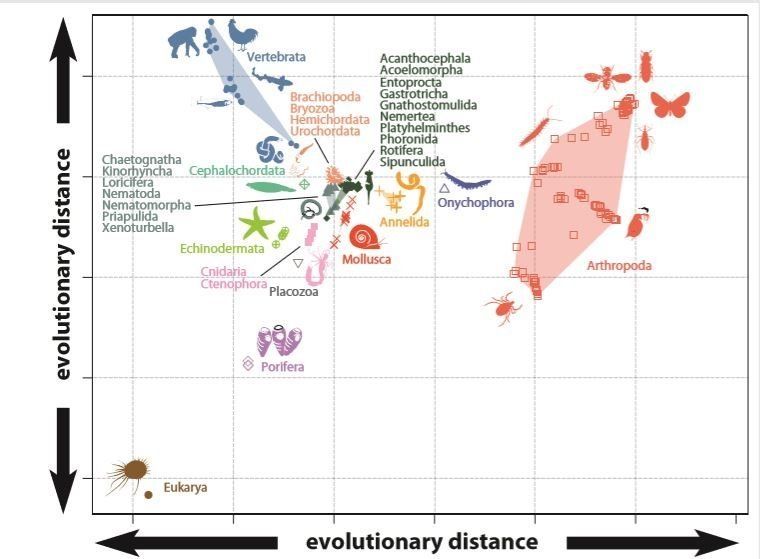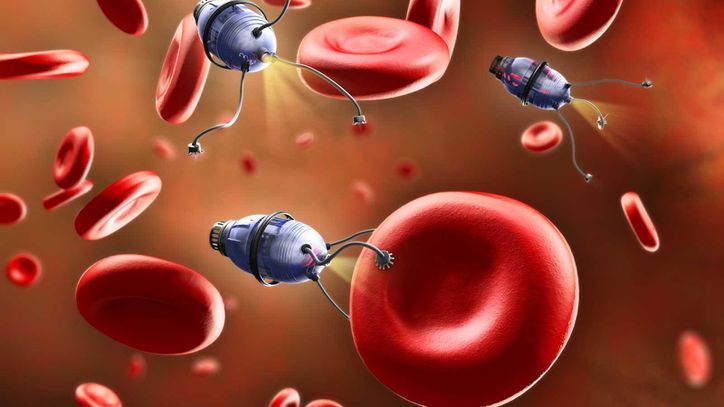Get the latest international news and world events from around the world.

What Does Quantum Theory Actually Tell Us about Reality?
Nearly a century after its founding, physicists and philosophers still don’t know—but they’re working on it.
- By Anil Ananthaswamy on September 3, 2018

Evolutionary origins of animal biodiversity
A new study by an international team of researchers, led by scientists from the University of Bristol, has revealed the origins and evolution of animal body plans.
Animals evolved from unicellular ancestors, diversifying into thirty or forty distinct anatomical designs. When and how these designs emerged has been the focus of debate, both on the speed of evolutionary change, and the mechanisms by which fundamental evolutionary change occurs.
Did animal body plans emerge over eons of gradual evolutionary change, as Darwin suggested, or did these designs emerge in an explosive diversification episode during the Cambrian Period, about half a billion years ago?

IVF children at far greater risk of dangerous high blood pressure, study suggests
Children born through IVF are six times more likely to suffer high blood pressure than naturally conceived children, putting them at greater risk of heart attacks and strokes, new research suggests.
In a study of 96 youngsters, researchers in the Switzerland found one in seven teenagers who were born through assisted reproduction had clinically high blood pressure by the age of 16, compared with just 2.3 per cent of those born naturally.
Around 20,000 babies are born through IVF in Britain each year. But the oldest test-tube baby — Louise Brown — is only 40 years old, so the long term impact of fertility treatment is still unknown.

Neil Armstrong biopic not unpatriotic, say sons as Aldrin fuels controversy
First Man does not show the astronauts planting US flag, sparking anger on the right – but second man’s views are unclear.



Scientists finally confirm that Uranus is surrounded by fart clouds
Sometimes science simply confirms what we already know to be true. You know what I’m talking about: researchers will find evidence that losing sleep makes you cranky and bad at your job, that eating lots of vegetables is good for your gut, or that Uranus is surrounded by a noxious fart cloud.
Indeed, the new findings on the latter published in Nature Astronomy come as no surprise to those who’ve spent time closely examining Uranus. More than a year ago, planetary scientists told Gizmodo’s Ryan F. Mandelbaum that the essence of this ice giant’s scent would probably be dominated by ammonia and hydrogen sulfide. Hydrogen sulfide gives rotten eggs their stink, but it’s also associated with the odor of a human fart.
Still, scientists had never directly detected the presence of these stinky molecules. Until now, that is. The authors of the new study examined sunlight bouncing off Uranus as captured by the 8-meter Gemini North telescope in Hawaii. Scientists determined what sorts of molecules were inside the atmosphere by examining the light it reflected in infrared. Different compounds absorb and cast off different wavelengths of light—creating a distinct and identifiable signature if you know what to look for. Think of it as dusting for fingerprints, but instead of a suspect, you’re looking for molecular compounds. The group says they were just barely able to detect the signatures they sought; it took a telescope as sensitive as Gemini and conditions as clear and perfect as those found at its home on Mauna Kea. Even though no one has ever smelt it, scientists can now say with certainty which molecules have dealt it.

Planet Nine might be invisible for at least 1,000 years
Scientists have long believed that our solar system might have a ninth planet orbiting well beyond Neptune and Pluto. Scientists hypothesize that the mysterious planet would be between five and 20 Earth masses and would orbit on an elliptical some hundreds or thousands of times more distant from the Sun than the Earth.
With the planet thought to orbit so far from Earth-based telescopes, it could be impossible to find with current telescopes. The challenge is that the planet is thought to be so dim, about a million times dimmer than Neptune, that it could hide in the light pollution from the Milky Way. Earth’s most potent observatory currently is the Subaru Telescope in Hawaii.
That massive telescope can view a field in the sky about the size of 4,000 full moons at once. Even with such a gigantic field of view, Planet Nine is very difficult to observe. Researchers note that if the orbit of the mysterious world is beyond the 1,000 AU limit of current telescopes, it could lie invisible for the next 1,000 years.
